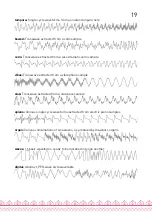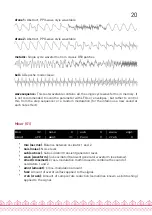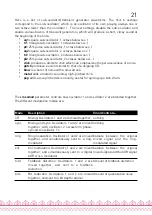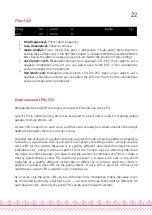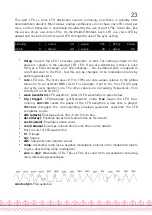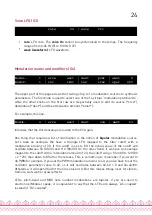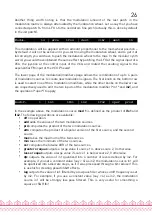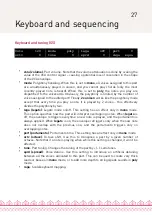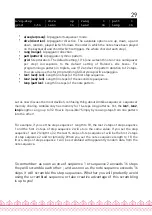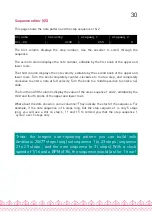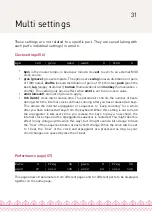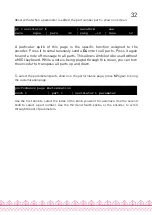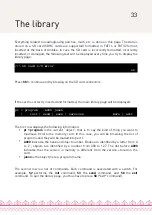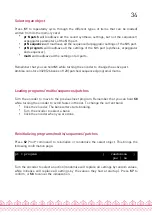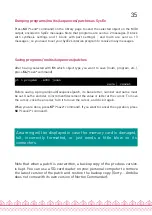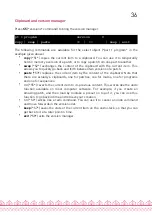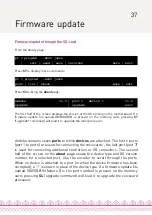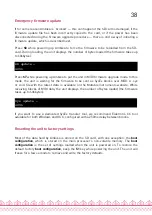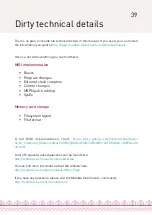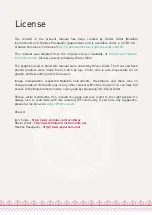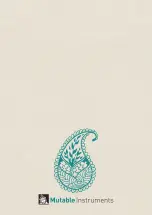
The different scales/keyboard mappings are:
Name
Description
equal
Equal temperament
just
Just intonation (frequency ratios to C are rational numbers)
pythagorean
Pythagorean scale
1/4 eb
E and B are 1/4 tone lower
1/4 e
E is 1/4 tone lower
1/4 ea
E and A are 1/4 tone lower
bhairav
...
rasia
A bunch of ragas of the
Maihar gharana
. Note that it is not possible to
play notes outside of the raga – if you attempt to do so, the previously
played note will be retriggered. The suggested mode of operation is to
find out which keys are active in the raga, and improvise with them!
Sequencer and arpeggiator settings (S5)
Each part of Ambika has a sequencer / arpeggiator. The sequencer consists of:
•
2 step-sequences, up to 32-step long, which can be freely routed to any modulation
source in the modulation matrix.
•
1 note pattern, up to 32-step long.
All parts follow the same global clock, which can be set to a fixed BPM or synchronized to
an external MIDI clock. However, since polyrythmy can be fun, each part can be
synchronized to a different subdivision of the MIDI clock and use a different step-
sequence / pattern length.
3 sequencing modes are available – they define how notes played on the keyboard are
translated into the notes played by the voices:
•
step seq
: Only the step sequencers (modulation sources) are running. The
arpeggiator and note pattern are disabled – thus only notes actually played on the
keyboard are heard.
•
arpeggio
: The notes played on the keyboard are not directly heard, instead, they are
arpeggiated.
•
pattern
: Holding a key triggers the note pattern programmed in the sequencer. The
pattern is played at its original pitch if the held key is C4 (midi note #60). Otherwise,
the pattern is transposed.
28






